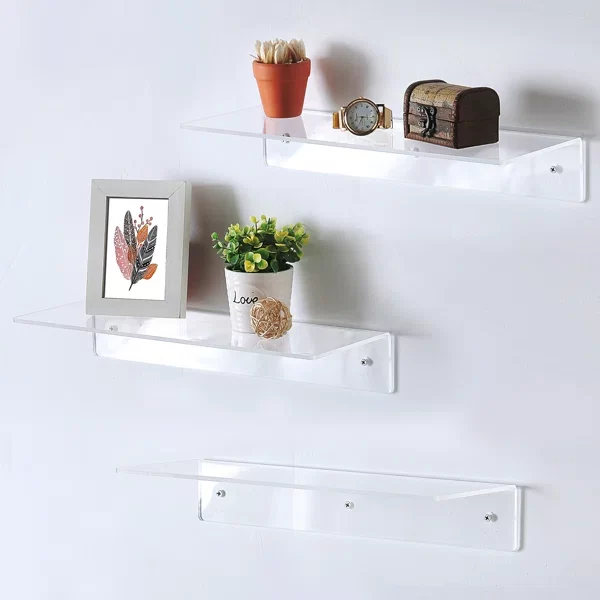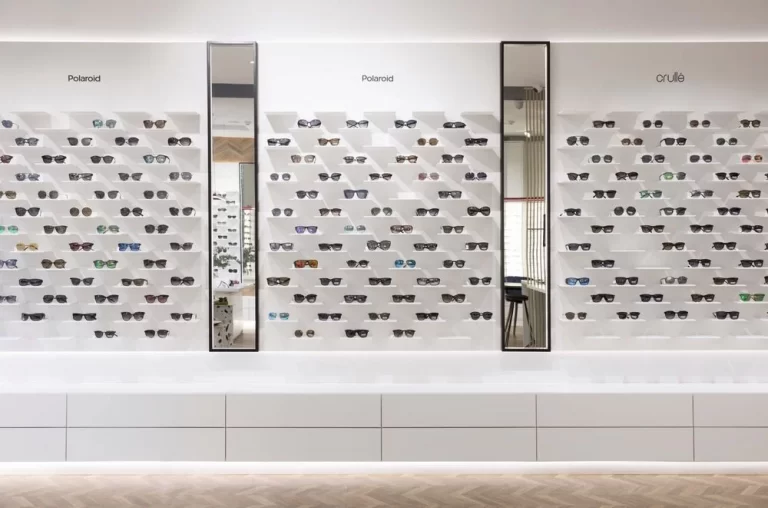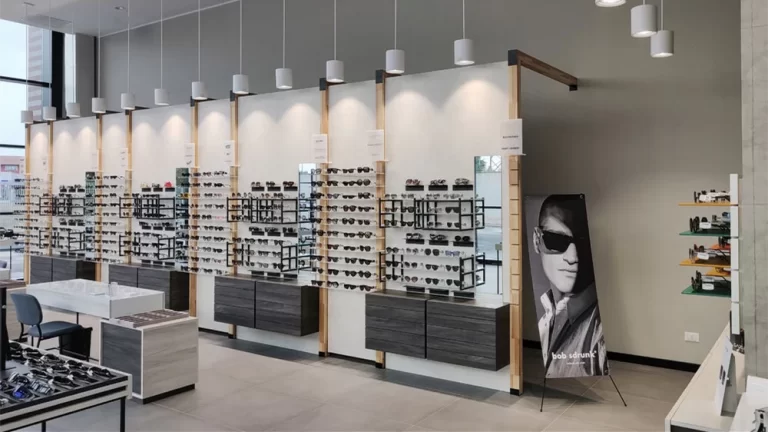When it comes to
acrylic shelves, choosing the right thickness is crucial for both functionality and aesthetics. Whether you’re looking to display items in your home or create a professional display for your business, understanding the different thickness options and their uses can help you make an informed decision. In this guide, we’ll walk you through the key factors to consider when selecting the right acrylic shelf thickness.
-
The thickness of an acrylic shelf affects its durability, weight capacity, and appearance.
-
Thicker shelves are more durable and can support heavier loads, but they are also heavier and more expensive.
-
Thinner shelves are lighter and more affordable, but they may not be suitable for heavy items.
-
Consider the intended use, environment, and design preferences when choosing the right thickness.
Factors to Consider When Choosing Acrylic Shelf Thickness
1. Load-Bearing Capacity
The primary factor to consider is the weight that the shelf will need to support. Thicker
acrylic shelves can handle heavier loads without sagging or breaking. For example, a 1/4-inch thick acrylic shelf can support moderate weight, making it suitable for books, electronics, and other household items. Thicker shelves, such as 3/8-inch or 1/2-inch, are ideal for heavier items like large vases or collections.
2. Impact Resistance
If the shelf will be placed in a high-traffic area or used in a retail setting, impact resistance is an important consideration. Thicker acrylic shelves are more resistant to impacts and less likely to crack or chip. For instance, a 1/2-inch thick acrylic shelf is more impact-resistant than a 1/4-inch thick shelf.
3. Flexibility
Thinner acrylic shelves are more flexible and easier to cut and shape. This makes them a good choice for projects that require bending or shaping, such as curved displays or custom designs. Thicker shelves are more rigid and provide a sturdier feel, which is ideal for structural applications.
4. Cost
The cost of acrylic shelves increases with thickness. Thicker shelves are more expensive due to the amount of material used. Consider your budget and the long-term value of the shelf when making your decision. Investing in a thicker shelf may save you money in the long run by reducing the need for replacements.
1. 1/8-inch (3mm)
-
Applications: Picture frames, lightweight indoor displays, and small decorative items.
-
Pros: Lightweight, easy to cut and shape, cost-effective.
-
Cons: Not suitable for heavy loads, less impact-resistant.
2. 1/4-inch (6mm)
-
Applications: Tabletops, larger shelves, display cases, and outdoor signage.
-
Pros: Moderate weight capacity, good balance of strength and transparency, suitable for a wide range of applications.
-
Cons: More expensive than thinner options, heavier.
3. 3/8-inch (9.5mm)
-
Applications: Larger retail displays, protective barriers, and tabletops that need to support more weight.
-
Pros: High durability, excellent impact resistance, suitable for heavy loads.
-
Cons: Heavier, more expensive, requires professional installation.
4. 1/2-inch (12mm)
-
Applications: Heavy-duty shelves, larger protective barriers, and countertops.
-
Pros: Excellent durability, high weight capacity, suitable for demanding environments.
-
Cons: Very heavy, expensive, requires professional installation.
Comparison Table
| Thickness |
Applications |
Pros |
Cons |
| 1/8-inch |
Picture frames, lightweight indoor displays |
Lightweight, easy to cut, cost-effective |
Not suitable for heavy loads, less impact-resistant |
| 1/4-inch |
Tabletops, larger shelves, display cases |
Moderate weight capacity, good balance of strength and transparency |
More expensive than thinner options, heavier |
| 3/8-inch |
Larger retail displays, protective barriers |
High durability, excellent impact resistance |
Heavier, more expensive, requires professional installation |
| 1/2-inch |
Heavy-duty shelves, larger protective barriers |
Excellent durability, high weight capacity |
Very heavy, expensive, requires professional installation |
Key Points to Remember
-
Choose the right thickness based on the weight the shelf will support.
-
Consider the environment and potential impacts.
-
Balance cost and long-term value.
-
Thinner shelves are more flexible, while thicker shelves are more rigid.
Common Questions About Acrylic Shelf Thickness
To calculate the thickness needed for your acrylic shelf, consider the weight it will support, the span between supports, and the environment. Online calculators or professional advice can help determine the appropriate thickness for your project.
2. What are the advantages of thicker acrylic shelves?
Thicker acrylic shelves offer greater durability, higher weight capacity, and better impact resistance. They are ideal for heavy loads and demanding environments.
3. Can I use thinner acrylic shelves for heavy items?
Thinner acrylic shelves are not recommended for heavy items, as they may sag or break under the weight. For heavy loads, choose a thicker shelf.
4. How do I install an acrylic shelf?
The installation method depends on the thickness and application. Thinner shelves can be cut and installed with basic tools, while thicker shelves may require professional installation.
5. What are the common thickness tolerances for acrylic sheets?
Acrylic sheet tolerances are typically +/- 10%, but variations are often less than 5%. Check the product specifications or consult the supplier for exact tolerances.
Conclusion
Choosing the right
acrylic shelf thickness is essential for ensuring the functionality and longevity of your project. By considering factors such as load-bearing capacity, impact resistance, flexibility, and cost, you can select the perfect thickness for your needs. Whether you’re creating a sleek display for your home or a professional setup for your business, the right acrylic shelf thickness will make all the difference.







